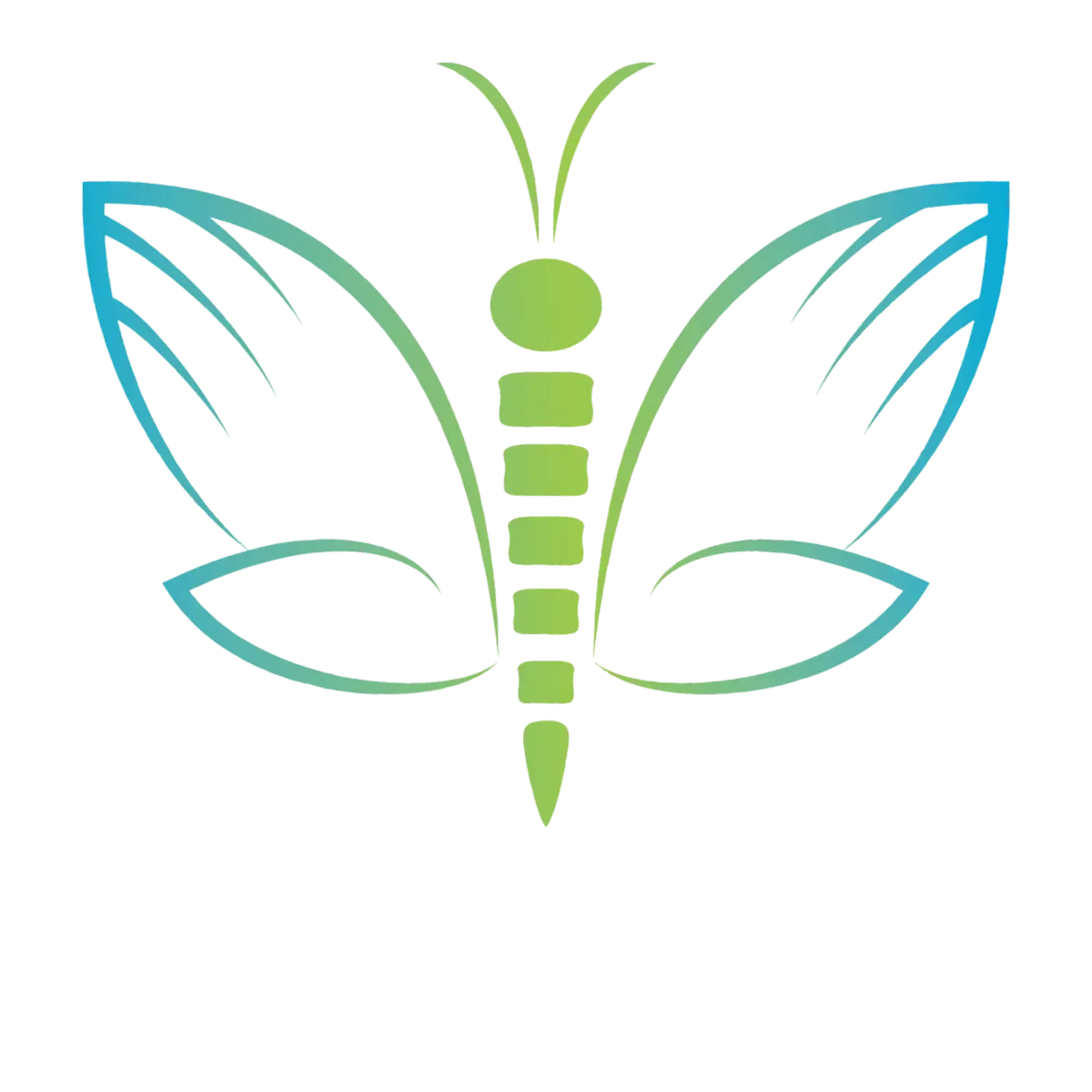Techniques Used
Find Out More About the Techniques Dr. Renee Uses Everyday In Practice
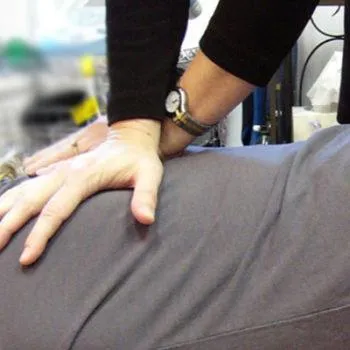
Diversified
This is a widely used type of chiropractic manipulation/adjustment that includes most of the procedures taught in chiropractic institutions. This technique is the most commonly used of all chiropractic techniques and is the one probably most familiar to patients. The Diversified manipulation/adjustment entails a high velocity, low-amplitude thrust delivered by hand and possibly with assistance from a table or block. This usually results in a cavitation of a joint (quick, shallow thrusts that cause the popping noise often associated with a chiropractic manipulation/adjustment). As the name implies, the Diversified Technique can be used to treat many of the joints in the body and is the primary technique used by Dr. Renee.
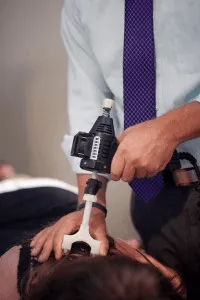
Accustim
Accustim Adjuster is an adjustment tool that assists Chiropractors in adjusting the patient and manipulating segments of the spine. The Accustim sends 12-14 thrusts per second when the trigger is held down, which in return helps to stimulate the spine and provide a better range of motion. Although there are several different techniques that can be used by chiropractors to help adjust or manipulate your spine, chiropractors prefer Accustim Adjuster tool as it helps patients that find a traditional adjustment applying too much force or for those suffering from osteoporosis and require a gentler approach. The Accustim tool is able to isolate specific segments of the spine, and then use this pin-point accuracy to make minute adjustments that can have a big impact on mobility. These tiny thrusts have shown remarkable results in the patients range of motion.
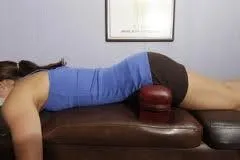
Sacro-Occipital Technic
Sacro-Occipital Technic (SOT) was originally formulated by Major Bertrand DeJarnette in the 1920’s. Dr. DeJarnette was inspired to go beyond simple spinal adjusting and developed methods of correcting the Cranium, Pelvis, Extremities and Organs. This study brought about a system of adjusting patterns in the body, not just single body parts. The most significant pattern was the relationship between the sacrum and occiput (which became the name of the technique). The hallmark of this technique is the use of low force adjustments in order to affect the overall tone of the nervous system.
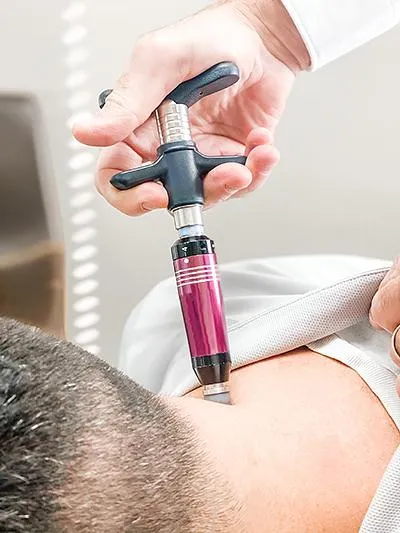
Activator
This technique is one of the most popular “low force” approaches to chiropractic in the world, because we use an adjustment instrument called The Activator Methods® Adjusting Instrument, which is a handheld spring-loaded tool that delivers a consistent low-force, high-speed thrust. This is extremely beneficial for elbows, wrists, knees, and other joints of the body, but can be used to adjust the spine as well.

Applied Kinesiology
Applied Kinesiology (AK) is a system that evaluates structural, chemical, and mental aspects of health using manual muscle testing combined with other standard methods of diagnosis. AK, a non-invasive system of evaluating body function that is unique in the healing arts, has become a dynamic movement in health care in its relatively short existence.
The combined terms “applied” and “kinesiology” describe the basis of this system, which is the use of manual muscle testing to evaluate body function through the dynamics of the musculoskeletal system. Treatments may involve specific joint manipulation or mobilization, various myofascial therapies, cranial techniques, meridian and acupressure skills, clinical nutrition, dietary management, counselling skills, evaluating environmental irritants and various reflex procedures.
FAQs
How does chiropractic care help with pain relief?
Chiropractic care focuses on identifying and correcting misalignments in the spine, known as subluxations, which can cause pain and discomfort. Through gentle adjustments, chiropractors restore proper alignment, reducing nerve interference and promoting the body's natural healing abilities.
Is chiropractic care safe for children?
Yes, chiropractic care for children is safe and gentle. Pediatric chiropractors use specialized techniques tailored to the unique needs of children. Early chiropractic intervention can help address issues like postural imbalances, colic, and sleeping difficulties, fostering optimal growth and development.
Is chiropractic care safe during pregnancy?
Absolutely. Chiropractic has been found to be very beneficial to the overall comfort of mom during pregnancy. It can help with the general pains associated with pregnancy, as well as help to optimize the biomechanics of the pelvis to help make delivery a bit smoother. Chiropractors will usually alter their adjusting technique to accommodate the changes to the body during pregnancy.
I don't like the "cracking" sound, can I still get adjusted?
Absolutely. While manual adjustments certainly are the most common, instrument adjustments are widely utilized in Dr. Renee's practice. She will always give the patient the option to get a non-manual adjustment, which eliminates the "cracking" noise.
How long will I need to wait for an appointment?
Most appointments can be made for the same day or the following day, depending on patient care hours, and availability. Specific blocks are available for an Initial Consultation every day, meaning availability can vary. Online booking is available, with booking accepted until 1 hour before the appointment time. If you are trying to book within the hour cut-off, please contact the office to book your appointment over the phone.
Are appointments required?
Yes, appointments are required. If you are in the area and are looking to get onto the schedule, just call the office and they will see what Dr. Renee's availability is like.
Why is a credit card required to book?
Credit cards are required to book as a way to guarantee your appointment. This was made necessary by the number of no-show visits that have occurred over the last several years. The card is merely an insurance policy, and will only be charged without explicit patient consent if there is a no-show for an appointment.
What types of adjustments does Dr. Renee do?
Dr. Renee has a variety of different techniques that she uses, see "Techniques Used" for information about them. Dr. Renee always takes patient comfort into account when deciding on a particular course of care, and values patient feedback. If a patient is uncomfortable with a certain manner of adjusting, or has any significant health history that could be worsened by a specific type of adjustment, Dr. Renee is always willing and able to make changes to her techniques.
Will I be adjusted on the first visit?
Dr. Renee will typically perform a complaint-based adjustment on the first visit, however that is not a guarantee. If she decides that imaging is required prior to any adjusting, she will postpone the adjustment until she has had the chance to review that imaging. Dr. Renee does reserve the right to decide on a case-by-case basis if an adjustment on the first visit is appropriate.
How often will I need to come in for my appointments?
The frequency of appointments is initially determined based on the exam findings, the spinal scan results, and Dr. Renee's professional experience. Through the course of your care plan, re-evaluations will dictate the decreases in your frequency with the ultimate goal of transitioning you to a wellness plan or a "maintenance plan" that requires very few appointments. In order to get to this phase, a higher frequency of visits may be required initially, though this is not always the case. If you have any concerns about potential plans of care, please speak to Dr. Renee.
How often will my progress be assessed?
After the initial visit, the progress of each patient will be reassessed periodically. Typically a re-evaluation is performed by Dr. Renee every 12 visits. Re-assessments must be performed within 24 visits as per College of Chiropractors of Ontario standards of practice.
Will my extended benefits cover my care?
It is recommended that you check with your insurance company to see if you have coverage for chiropractic. We do not directly bill extended benefits companies on behalf of the patient; however, we can provide you with an invoice that you can submit to your insurance company and be reimbursed if you do have coverage. You should also check with your extended benefits about whether a medical referral is needed to have care covered.
Is there a cancellation policy?
There is no penalty for cancelling an appointment; we only ask that you give us a call to inform us that you no longer need the appointment. A credit card number is required to book any visit online to deter no-shows, which have unfortunately been rising recently. If a patient no-shows, they will be charged.

